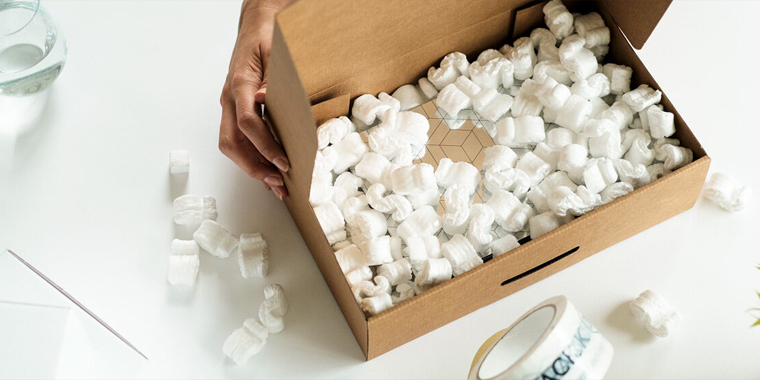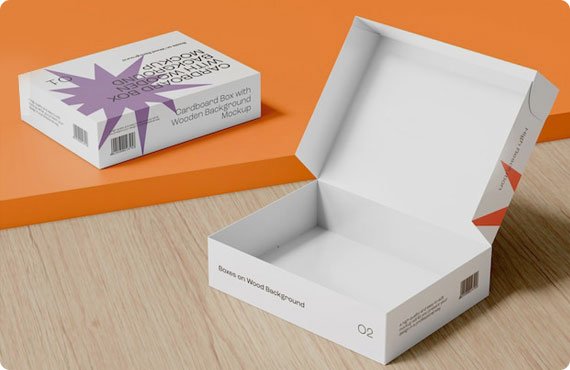September 15, 2025

Keeping products safe during shipping is a top priority. Packaging fillers play a vital role in this regard. They reduce damage and enhance the presentation. Using the right filler makes a real difference for electronics, food, or luxury items.
Greener options are also available for these fillers as more businesses shift towards sustainable alternatives. The ideal packaging fillers can reduce costs and improve customer satisfaction.
This guide will discuss packaging fillers, their types, and their benefits. We'll also explore specific fillers for different industries. So, keep reading!
These materials are used inside a package to protect products from impact and shock. They restrict movement during transit. This helps ensure that items reach customers in perfect condition.
Companies use these fillers for many reasons. They can protect items and make shipments look professional. These fillers are an essential part of packaging in many industries, such as e-commerce and cosmetics.

Different products need different types of fillers. Below, we’ve discussed some common packaging fillers types:
It is a simple choice. These include kraft paper and tissue paper. They provide cushioning without too much weight. Many brands use them for holiday gift boxes and e-commerce shipments.
They offer strong protection for fragile items. These are mostly used for electronics, glassware, and medical equipment. Normal foam isn’t always recyclable, but biodegradable versions are now available.
They include bubble wrap and air pillows. These are lightweight but effective at absorbing shock. Companies and retailers use them to keep products safe during shipping.
This kind of filler is becoming more popular. Cornstarch packaging fillers peanuts and recycled paper are great alternatives to plastic. Many businesses prefer these options to reduce their environmental impact.
Gift packaging fillers add both protection and a stylish touch. Crinkle-cut paper and other shredded decorative materials are commonly used in luxury packaging and retail boxes.
They help keep perishable goods safe. Food-safe padding and cup fillers prevent damage and maintain freshness. Bakeries and meal delivery services use these fillers.
These fillers include pouches and air-filled bags. They’re common in the food & beverage industry to protect and preserve products.
Using packaging fillers has several benefits. Let’s review some of them:
Picking the right filler depends on several factors. These are described below:
Type of Product: Delicate products need strong protection, like air cushions. On the other hand, sturdy items can use paper-based fillers.
Environmental Impact: Many brands are adopting greener options to minimize their carbon footprint. So, go for biodegradable or recyclable fillers.
Cost-Effectiveness: A balance between cost and level of protection is important. Brands should choose fillers that are affordable and have excellent quality.
Enhanced Customer Experience: Using premium fillers can increase customer satisfaction and brand loyalty.
Regulations Compliance: Some industries have strict standards that must be followed, such as fragrance and cosmetic boxes. So, choose packaging fillers wisely.

Every industry has different requirements. That’s why different kinds of packaging fillers are used in the market. Following are some industries that use these fillers:
E-Commerce and Retail - Online businesses need reliable fillers to protect shipments. Crinkle paper and air cushions prevent movement and damage. Many companies now choose recyclable options to appeal to eco-conscious buyers.
Cosmetic Packaging - Cosmetic items need both protection and luxury. Foam inserts and decorative cosmetic packaging fillers help prevent breakage and enhance presentation.
Food Packaging - Food-safe fillers like cup inserts and compostable padding help maintain freshness and prevent damage. Sealed air pouches are used to preserve food quality.
Electronics and Fragile Goods - Sensitive electronics require shock-absorbing fillers like bubble wrap. They prevent impact damage and keep delicate components safe.
Gift and Luxury Packaging - Premium brands use decorative fillers to elevate the unboxing experience. Silk wraps and crinkle-cut paper are commonly used to give a sophisticated feel.
Are you wondering does packaging fillers need a resale certificate? Businesses that buy packaging fillers in bulk may need a resale certificate. This allows them to purchase fillers tax-free for resale purposes.
Compliance requirements change by location, so it’s important to check local laws. In addition, eco-friendly packaging may require certifications to meet sustainability standards.
Also Read: The Complete Guide to Understanding Product Packaging Inserts
Selecting the most suitable packaging fillers can make a huge difference in product protection and customer satisfaction. This ensures your products arrive safely and leave a lasting impression on customers.
At Custom Designs Boxes, we provide high-quality packaging solutions and fillers that are made as per your needs. We help businesses enhance their shipping and branding with expert insights.
Contact us today via email at sales@customdesignsboxes.com to find the perfect packaging fillers for growing your business in the market.
Find the perfect packaging solutions tailored to your industry niche.
Don't just imagine – experience excellence up close, as you can check our superior craftsmanship before making your decision by ordering your sample kit.
